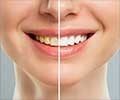A partnership among bacteria and fungi has now been noticed in the form of an aggressive and painful tooth decay problems in preschool children

"Our data will certainly open the way to test agents to prevent this disease, and even more intriguing, the possibility of preventing children from acquiring this infection," says Koo.
In the study the investigators showed that infection by S. mutans and C. albicans together doubled the number of cavities, and boosted their severity several-fold in rats.
Koo, of U. Penn's School of Dental Medicine, has spent 15 years studying how microbes construct the biofilms, also known as plaque, that have plagued teeth since H. sapiens invented agriculture, bringing large quantities of starch into the diet. (Caries are common in Neolithic skeletons, but virtually absent from our Paleolithic ancestors.)
The bacterium Streptococcus mutans has long been assumed to be the sole microbial culprit, but Koo and collaborators—as well as other investigators—noticed that the fungus, Candida albicans, was almost always present in plaque from cases of early childhood caries. S. mutans sticks to the surfaces of teeth by converting sugars to a sticky glue-like material called extracellular polysaccharide (EPS.) In the mouth, Candida adheres mainly to cheek and tongue, but had rarely been seen in dental plaque.
"However, we and others noticed that Candida was very frequently observed in plaque from patients who have early childhood caries," says Koo. "We were puzzled! Candida usually does not associate with S. mutans, nor does it colonize teeth very effectively."
Advertisement
"The combination of the two organisms led to a greatly enhanced production of the glue-like polymer, drastically boosting the ability of the bacterium and the fungus to colonize the teeth, increasing the bulk of the biofilms and the density of the infection," says Koo. All that led to greatly elevated accumulation next to the teeth of the acid that dissolves enamel, leading to cavity formation.
Advertisement
Source-Eurekalert














